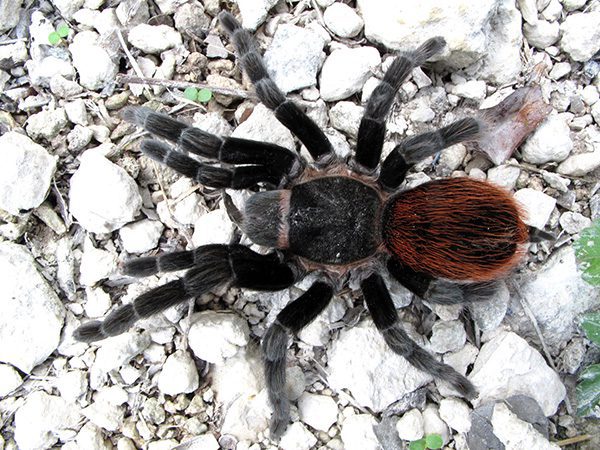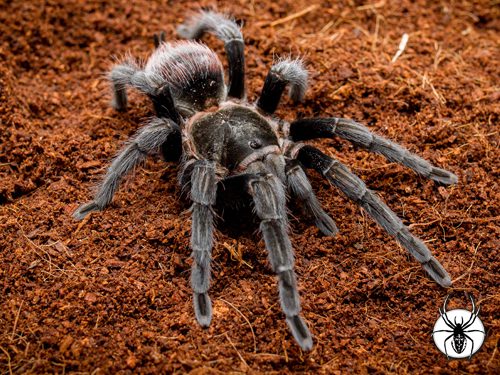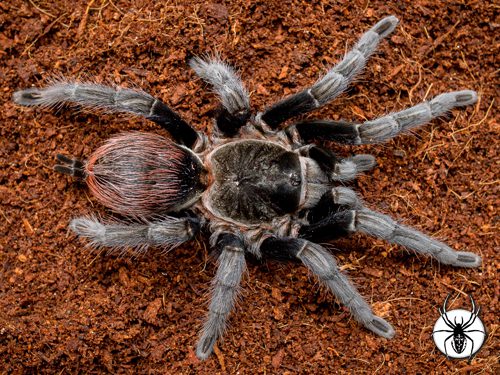Tlitocatl vagans
Mexican Red Rump (1cm)
Species Info:
Origin
Lifestyle
Temp
Humidity
Leg Span
Disposition
Suitability
Another classic hobby species! An attractive spider that is large heavily bodied with velvet jet black colouration with dense long red setae (hair) on the abdomen making it a stunning display species. A very easy to keep species which needs more humid conditions then other related species like Mexican Red Knee (Brachypelma smithi). They need access to a water dish and a thick layer of slightly moistened substrate in its enclosure. Also supply the Spider with a hide but you may find it is just as happy to be out in the open. Having the widest distribution range among American tarantulas: from Mexico through Central America to Honduras, it inhabits different types of bio topes – from tropical rainforests to grasslands. Also in 1996 a population (about 100 specimens of different ages) was found in Citrus Avenue in Saint – Lucy County, Fort Pierce. Florida (Edwards et al. 1999).
There is a lot of confusion with this species because of several very close related and similar looking species that are named Red Rumps: B. sabulosum, B.angustum and B.epicureanum which all look similar. There is one unique taxonomical character described for this tarantula – existence of two different types of spermathecae (Smith 1994).
This species is often bred in captivity and produces a large number of spiderlings (500-800) which are good eaters and medium to fast growers. At the earlier stages of development young tarantulas often have a paler coloured carapace than adults. This really is a beautiful species and is an ideal spider for the novice keeper.


